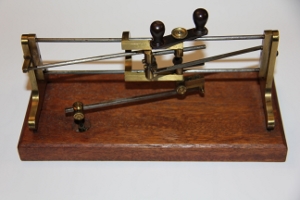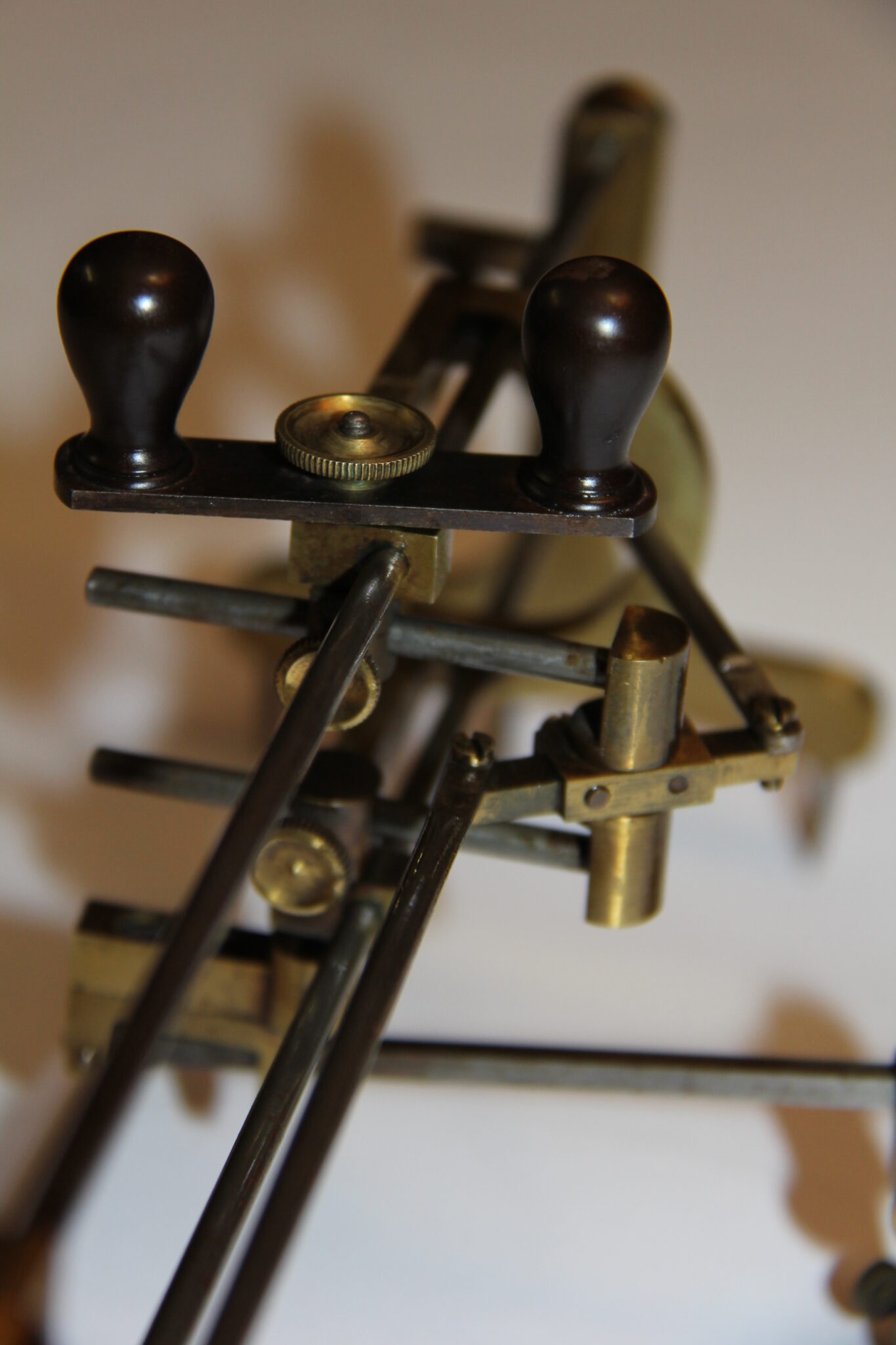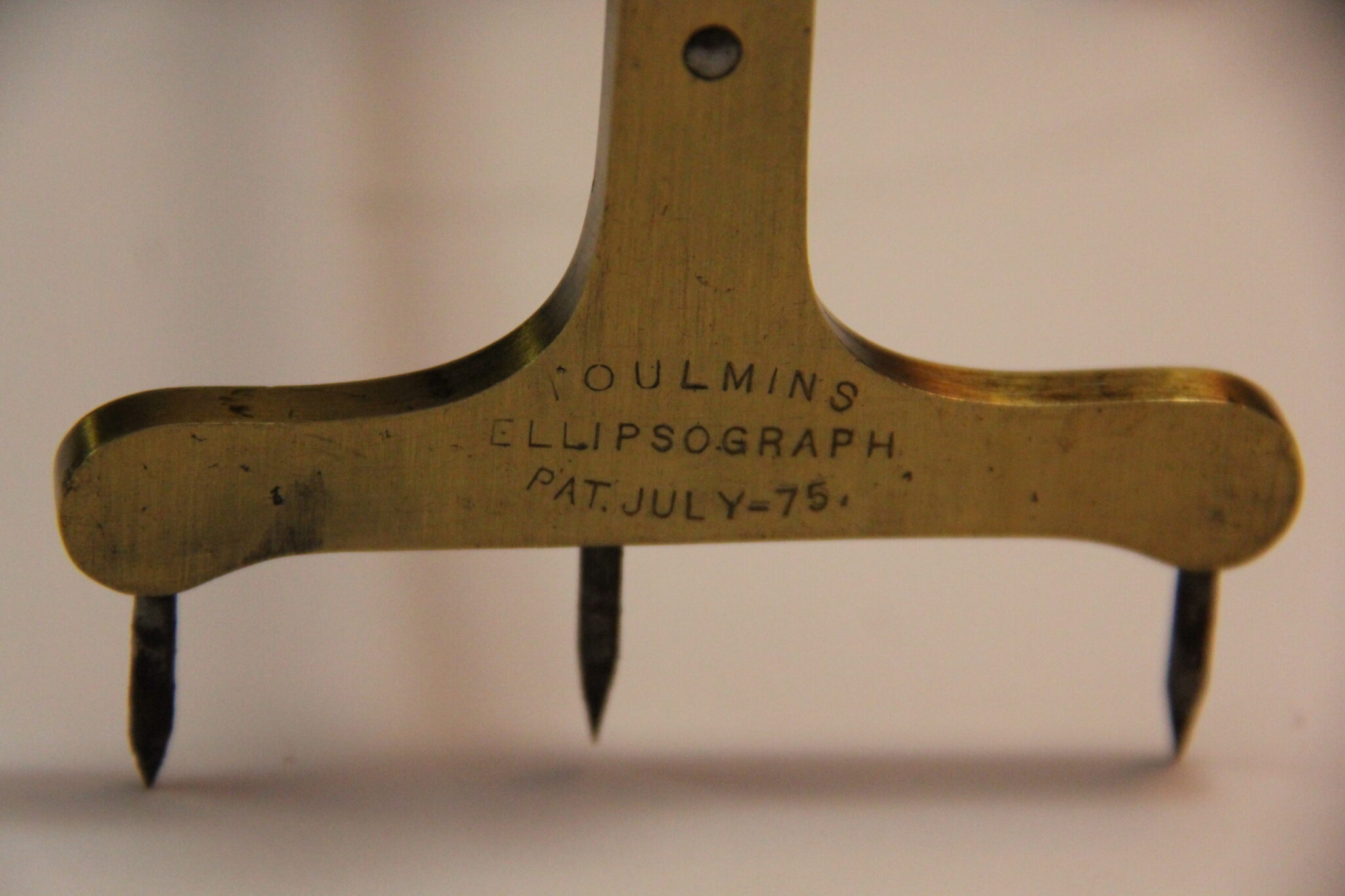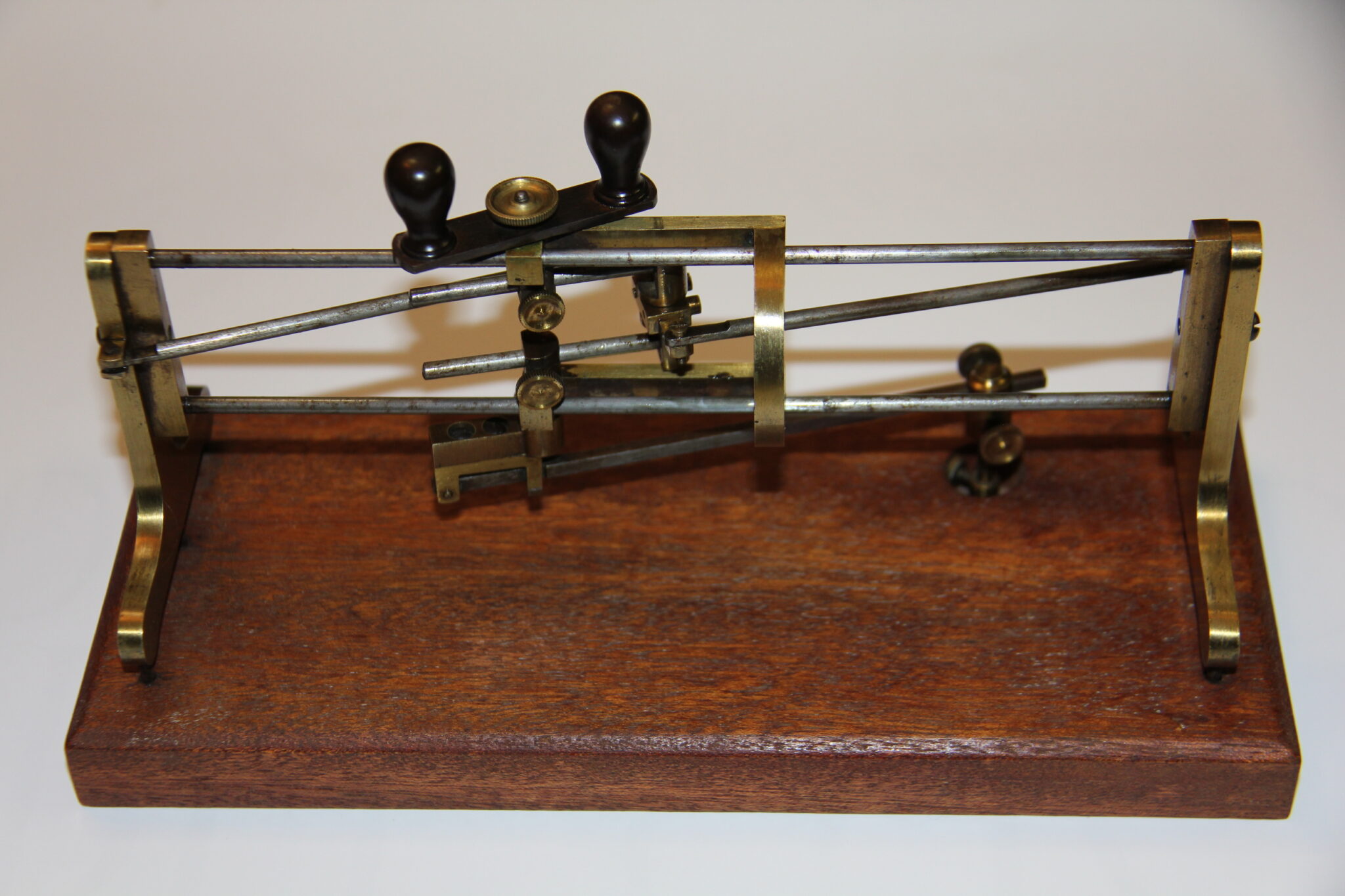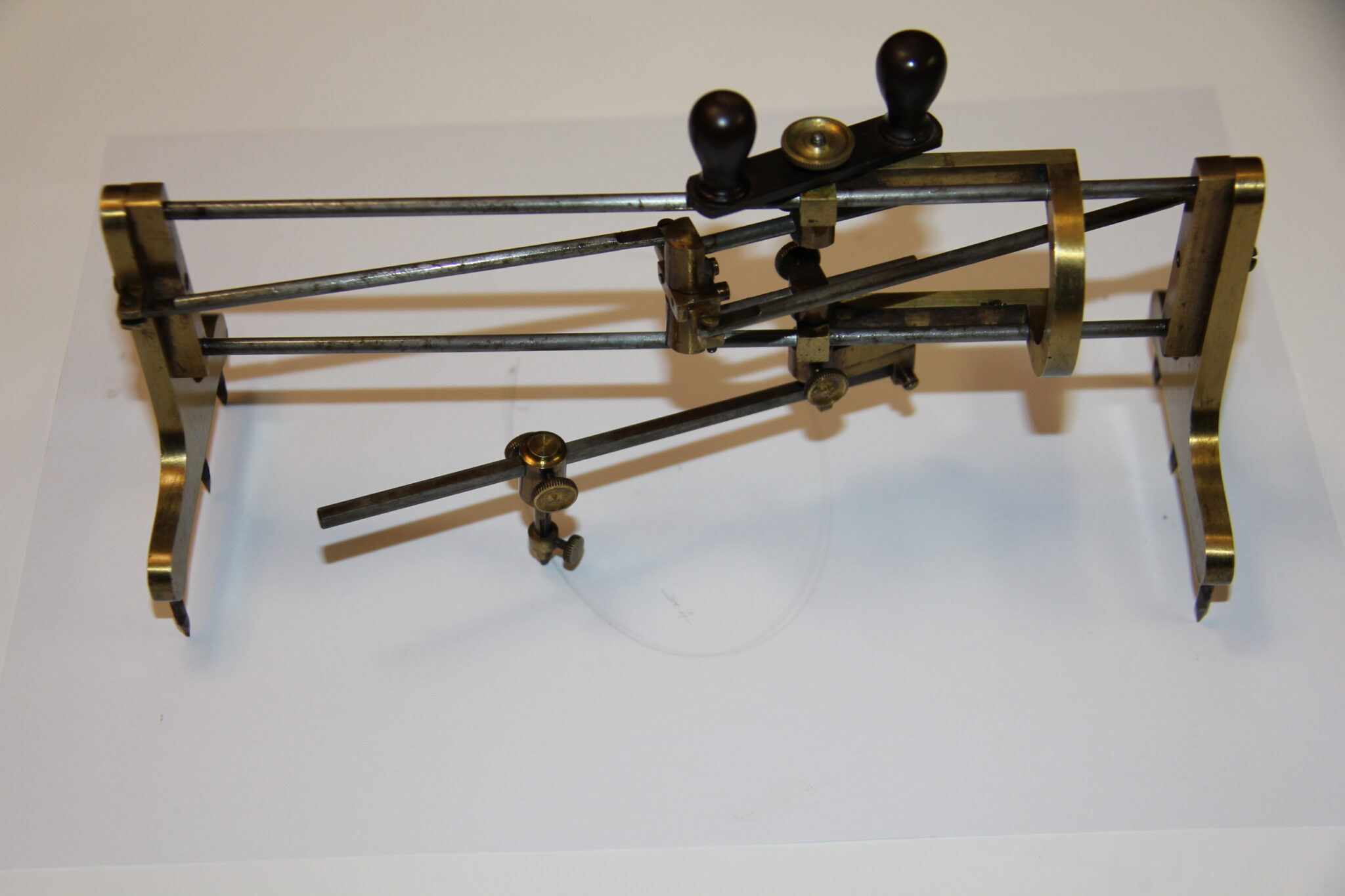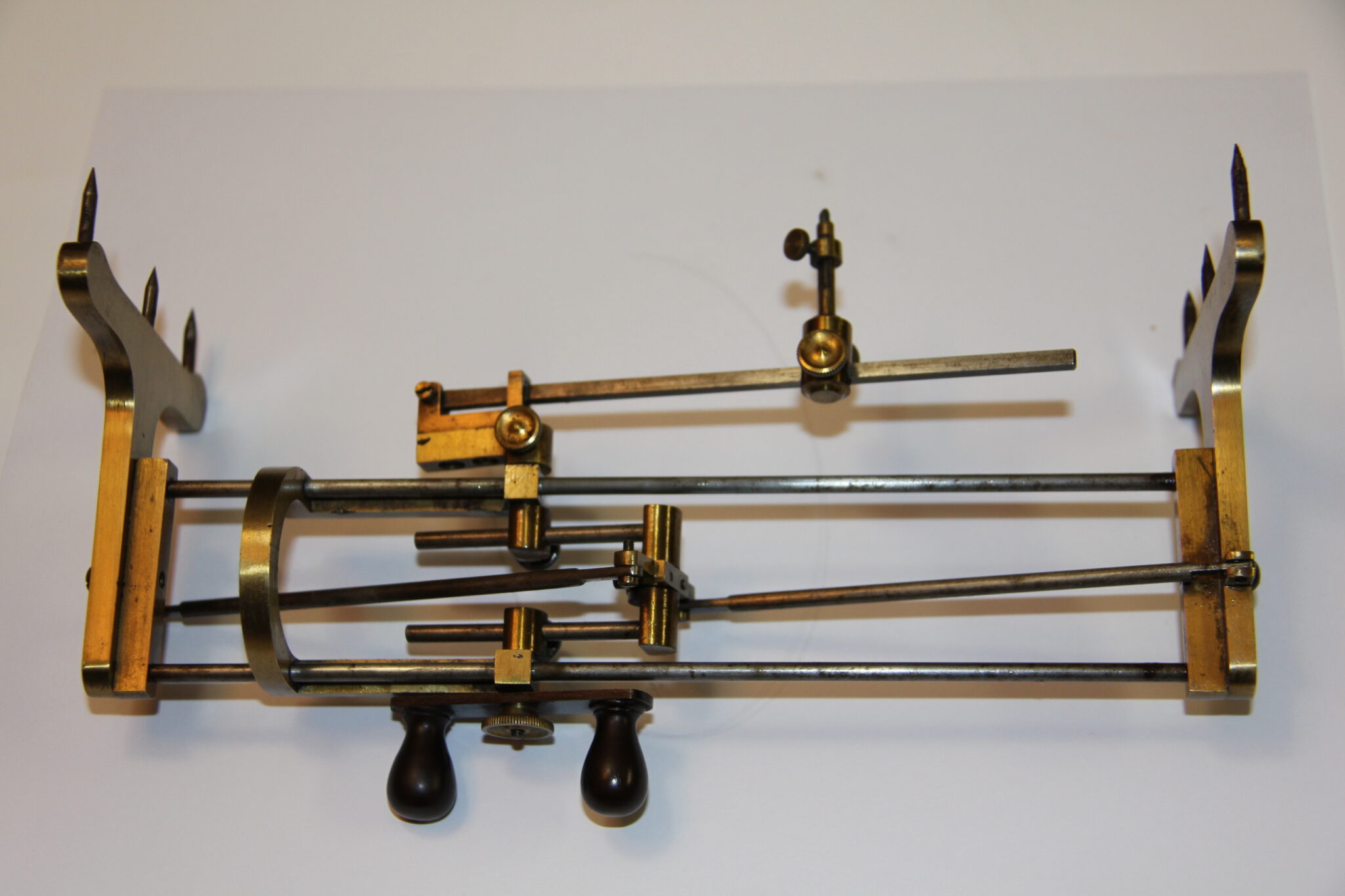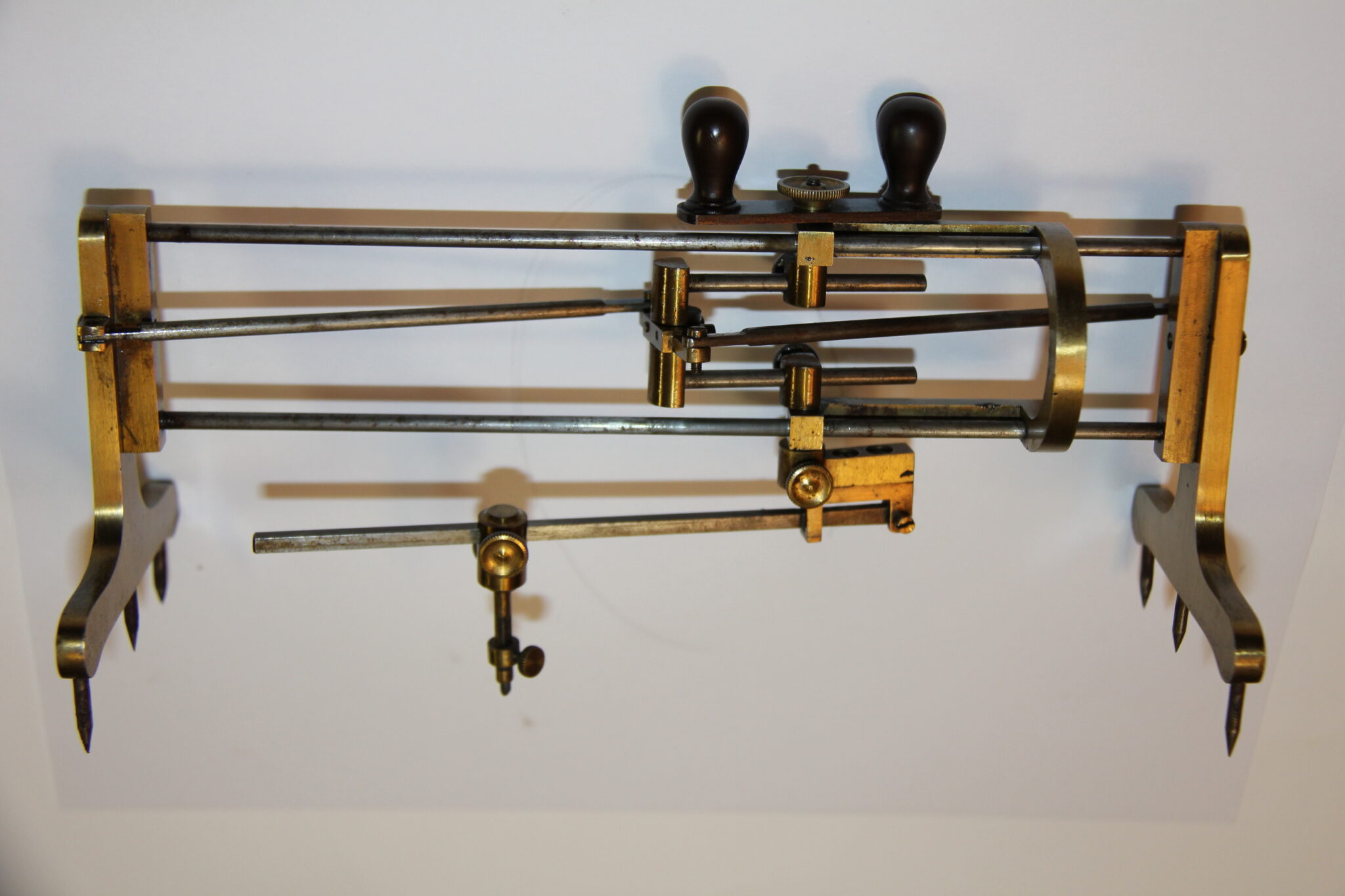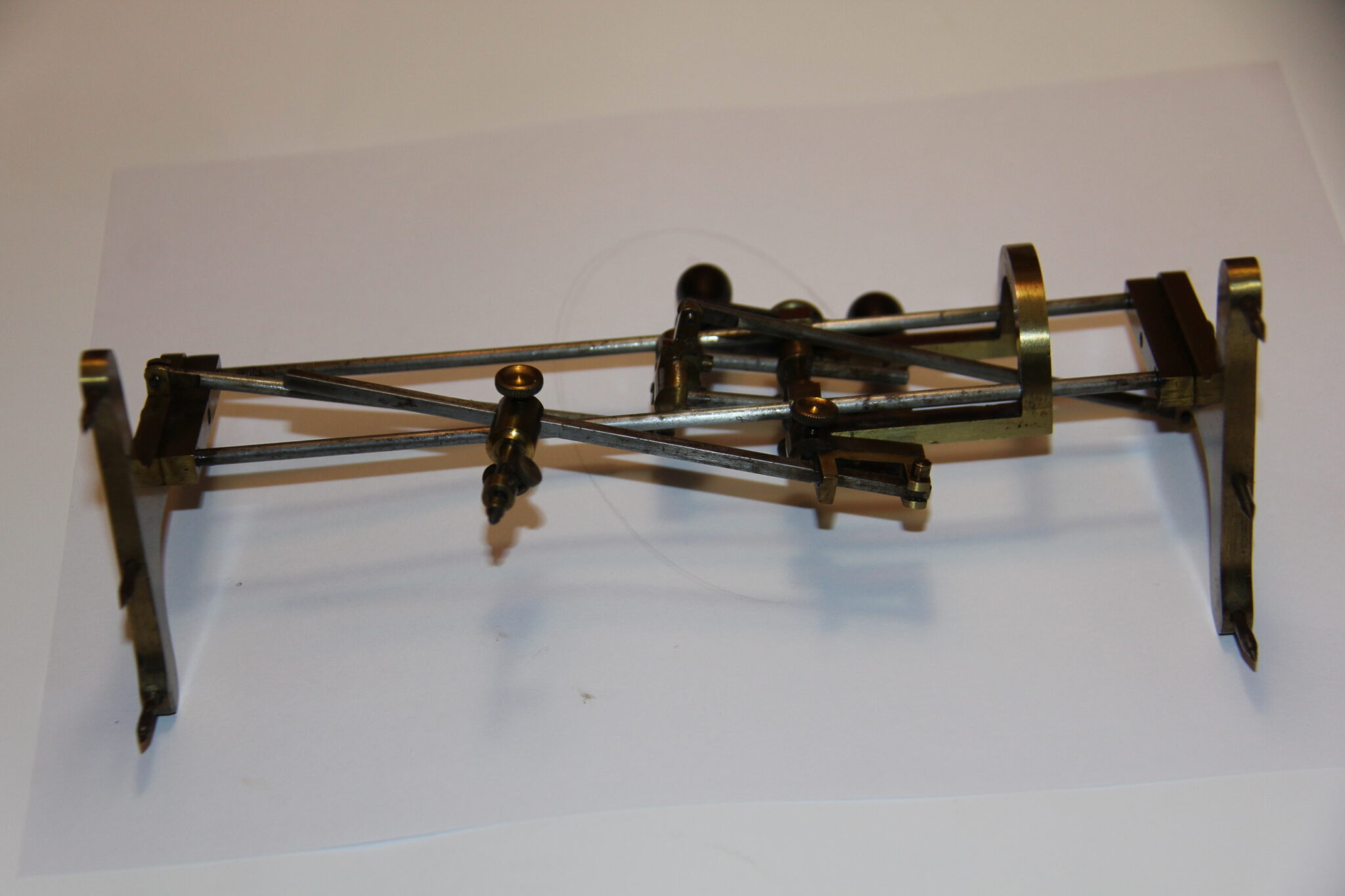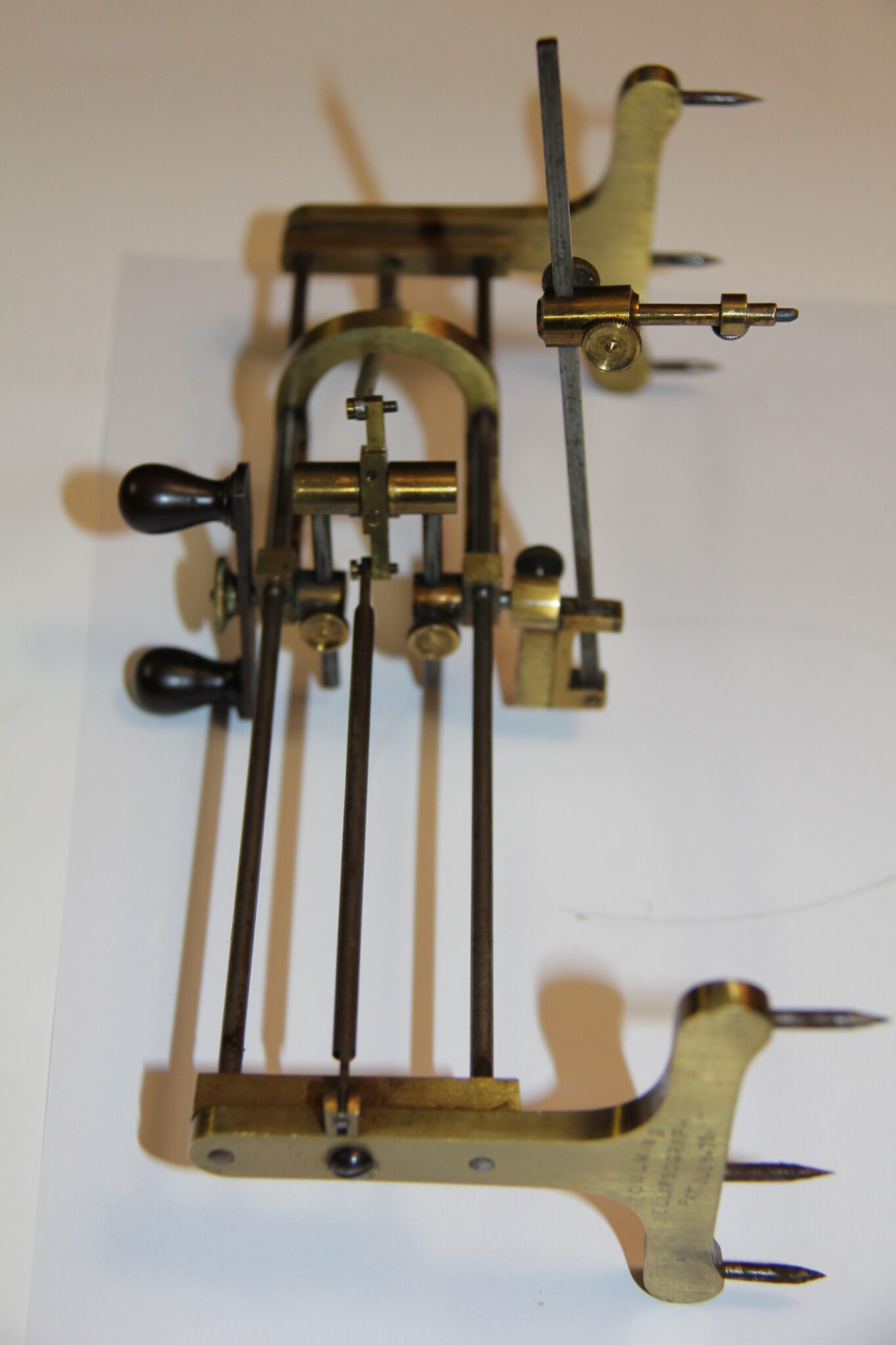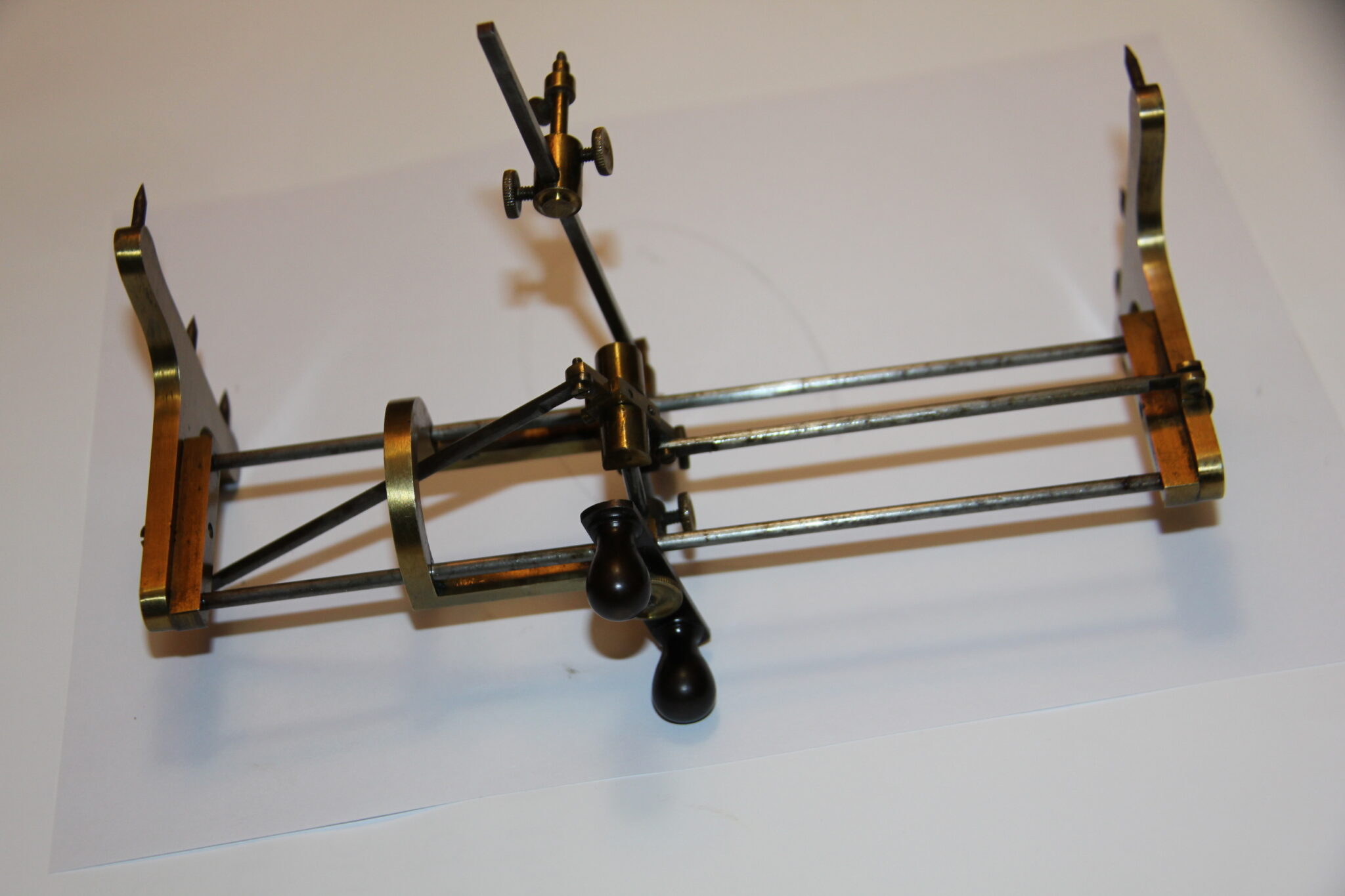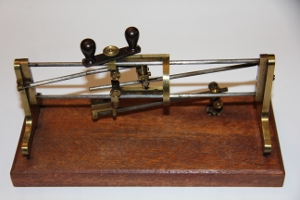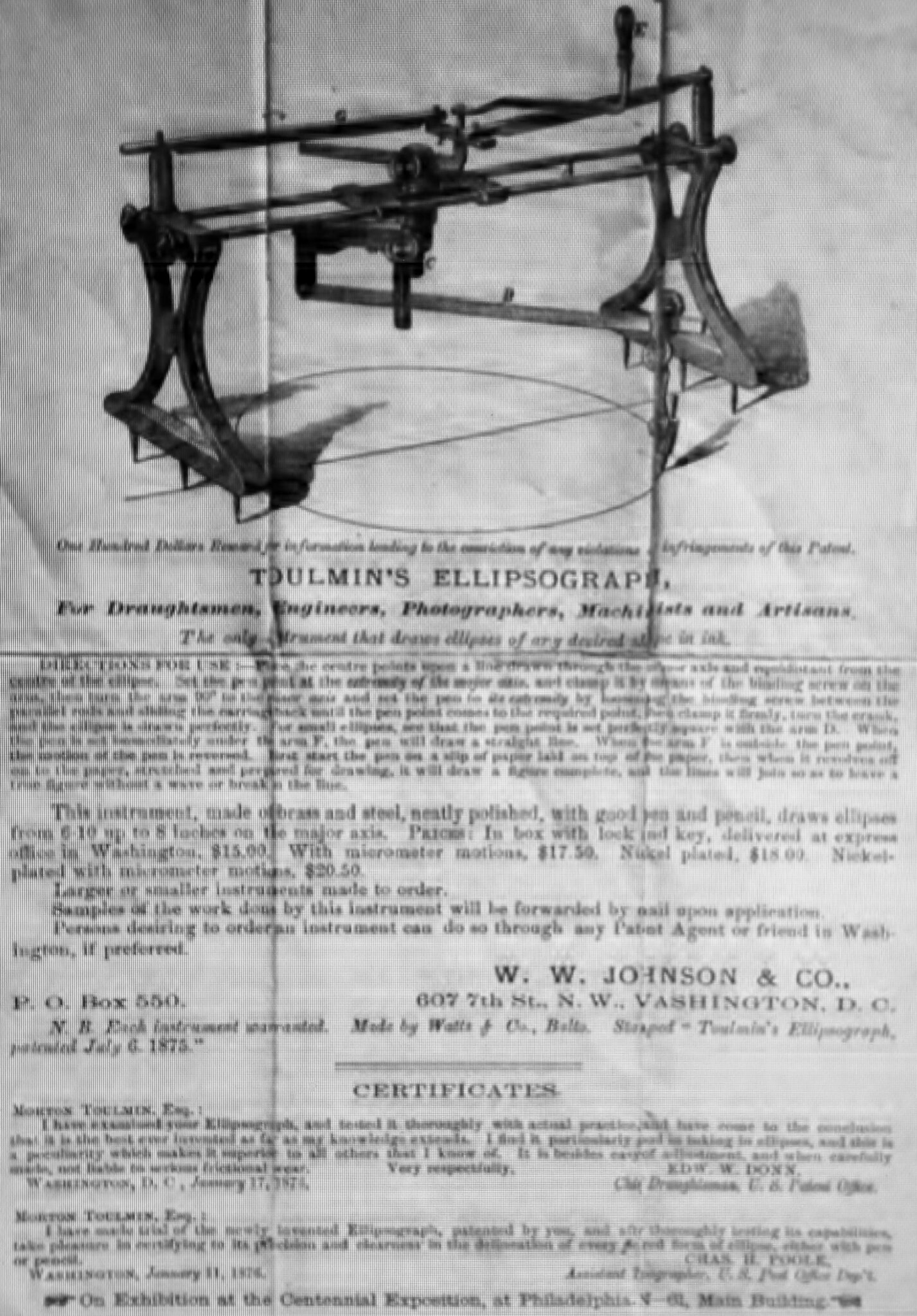Description
Ellipsograph patented July 6, 1875 in Washington D.C. by Morton Toulmin and made by Watts & Co. Baltimore, MD. on a decorative mahogany plinth to protect the six offset spikes and the pencil stylus.
The two primary steel beams are fixed to brass end plates terminating in offset steel spikes to secure the device to paper below and a draftman’s desk. The two fully adjustable and moveable secondary steel beams (trammels) are controlled by a central pivot, hand operated by two wooden knobs. The secondary beams are capable of making eccentric circles (ellipses) of 6-8 inches in length. A fully adjustable tertiary steel beam attached to a pencil stylus allows the user to make progressively smaller ellipses. A marvel of engineering, like watching a steam engine in slow motion, the full rotation of all of the beams ultimately controlled by a U-shaped brass bracket that acts as a stop and reverses to enhance the drawing (retraces) or to adjust the beams for ellipses within ellipses. The stylus moves vertically to allow for more pressure on the paper as the pencil wears down.
Although without it’s original box, the instrument has been displayed on the plinth and has no damage. Every part works smoothly as intended. The instrument measures 8 1/2 by 4 inches (21 x 10 cm.). Haven’t seen another example for 10 years !
Ask the Dealer
Dealer information
 Scientifica Opticae Inc.
Scientifica Opticae Inc.
Scientifica Opticae
Mark Hacking (Scientifica Opticae Inc.) has been an avid collector/dealer for over 40 years. A former Science teacher, he has an innate love for anything natural or mechanical. Specializing in optical (microscopes, telescopes), surveying, medical, weighing and drawing instruments, he is an active participant of the Scientific Instrument Fair in London. Living in Stratford, Ontario, Canada, with his wife and two children; Mark looks forward to meeting as many fellow collectors as possible, and has a worldwide following on eBay (Sciopti). As of Nov. 1/24 my email has changed to either [email protected] or [email protected].




